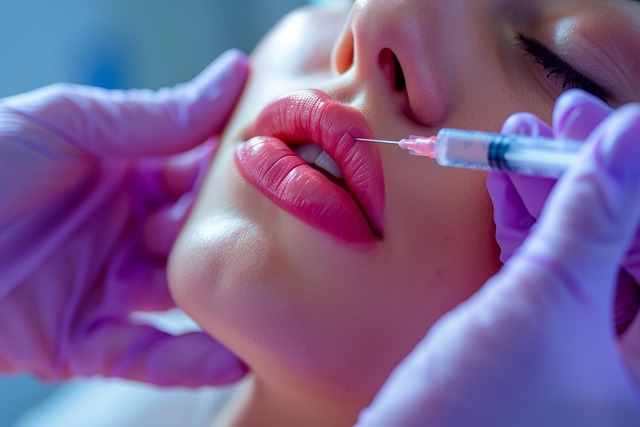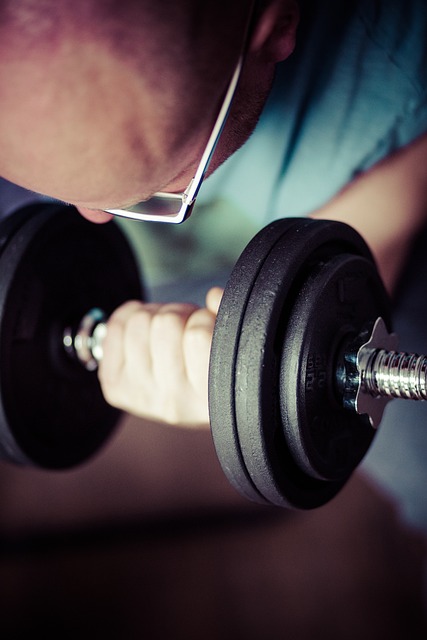Botox is a popular non-surgical solution for achieving a more youthful appearance by reducing crow's feet and slimming the jawline. It relaxes facial muscles, prevents further wrinkle formation, and provides immediate satisfaction with minimal downtime. The treatment offers long-lasting results (3-6 months) and can address both aesthetic concerns and alleviate temporomandibular joint disorder (TMJ) symptoms. Choosing a qualified provider with relevant expertise and certifications is crucial for safe and effective outcomes. While costs vary based on location, clinic reputation, and individual needs, proper maintenance practices after treatment can enhance and extend its benefits, including jawline slimming.
“Uncover the secrets to achieving a youthful glow with our comprehensive guide to Botox treatments for crow’s feet. We explore the science behind this popular procedure, delving into how it effectively reduces jawline fat and minimizes facial wrinkles. From understanding the impact of crow’s feet on your appearance to choosing the right provider, this article covers all aspects.
Discover the cost factors influencing Botox prices, potential risks, and recovery processes, ensuring you’re well-informed before taking the dive. Learn about maintenance tips for long-lasting results, especially focusing on the benefits of Botox for jawline slimming.”
Understanding Crow's Feet and Their Impact on Facial Appearance

Crow’s feet, named after their resemblance to a bird’s foot prints, are fine lines and wrinkles that appear around the eyes and mouth due to constant facial expressions. These delicate areas are highly susceptible to aging, as skin here is thinner and contains fewer oil glands, making it more vulnerable to the effects of environmental factors like sun exposure and muscle movement. Over time, this can lead to noticeable changes in facial appearance, with crow’s feet becoming more prominent and contributing to a tired or aged look.
The benefits of Botox for jawline slimming extend to addressing these crow’s feet as well. By injecting botulinum toxin into the specific muscles responsible for frowning and squinting, Botox can relax them and reduce the frequency and intensity of these expressions. This not only prevents further wrinkle formation but also reverses existing damage, giving the face a more youthful and refreshed appearance. The slimming effect on the jawline is an additional advantage, enhancing overall facial balance and harmony.
The Science Behind Botox: How It Works for Jawline Slimming

Botox, a protein derived from bacteria called Clostridium botulinum, has become a popular non-surgical treatment for various cosmetic procedures, including jawline slimming. When injected into specific muscles, Botox relaxes them, reducing the appearance of wrinkles and providing a more defined jawline. This procedure is particularly sought after for its minimal downtime and natural results.
The benefits of Botox for jawline slimming are numerous. It can help to contour facial features by weakening the masseter muscle, responsible for chewing and jaw clenching. By relaxing these muscles, it not only reduces the appearance of a squared or bulked jaw but also potentially alleviates symptoms of temporomandibular joint disorder (TMJ). This dual advantage makes Botox an attractive option for those seeking both aesthetic improvements and relief from jaw-related discomfort.
Benefits of Botox Treatment for Reducing Jawline Fat

Botox treatment for jawline fat reduction offers several significant benefits, making it a popular non-surgical aesthetic choice. By injecting botulinum toxin into specific muscles around the jawline and chin, skilled practitioners can subtly relax these areas, leading to a slimmer, more defined look. This procedure effectively reduces the appearance of jowls and a double chin, enhancing facial contours and providing a more youthful, balanced profile.
One of the key advantages is its non-invasive nature, eliminating the need for surgery or extensive recovery periods. The treatment is relatively quick, often taking just 15 to 30 minutes, and results can be seen within days to a few weeks. Patients appreciate the minimal downtime and immediate satisfaction, as well as the long-lasting effects, typically lasting between 3 to 6 months, which offer sustained improvements without ongoing maintenance.
What to Expect During a Botox Procedure for Crow's Feet

When undergoing a Botox procedure for crow’s feet, patients can expect a relatively quick and virtually painless experience. The treatment typically involves several small injections of botulinum toxin into the specific muscle groups responsible for frowning and squinting, which are often the culprits behind these fine lines. You may feel a slight stinging sensation at each injection site, but most providers use topical anesthetics to minimize any discomfort.
One of the key benefits of Botox for crow’s feet is its ability to relax the facial muscles, preventing them from contracting and forming deep wrinkles. This not only smooths out the skin’s surface but also offers a non-surgical alternative to more invasive procedures like face lifts. Additionally, many patients appreciate the side benefit of jawline slimming, as Botox can help reduce the appearance of a squished or rounded chin by relaxing the masseter muscles, resulting in a more defined and balanced facial structure.
Choosing the Right Provider for Safe and Effective Results

When considering Botox for crow’s feet and jawline slimming, choosing the right provider is paramount for achieving safe and effective results. It’s essential to look beyond just the price tag and research practitioners who possess relevant expertise and certifications in cosmetic procedures. A reputable professional will thoroughly assess your facial structure, skin condition, and medical history to determine if Botox is the suitable choice for you. They’ll also guide you on the appropriate dosage and injection techniques tailored to your needs.
Moreover, a reliable provider should offer a discreet environment and uphold strict sterilization protocols to minimize risks associated with the procedure. Discussing your expectations openly will help ensure you receive customized treatment that not only addresses crow’s feet but also enhances the overall appearance of your jawline, offering both aesthetic benefits and confidence-boosting results.
Exploring the Cost Factors Influencing Botox Price for Crow's Feet

The price of Botox treatments for crow’s feet can vary widely, and understanding the cost factors is essential for anyone considering this aesthetic procedure. Several elements contribute to the overall expense, ensuring that patients receive a fair price aligned with their specific needs. One significant factor is the region where the treatment is administered. Geographic location often dictates the cost due to variations in labor rates and local market dynamics. Additionally, the reputation of the clinic or practitioner plays a role; established, high-end facilities may charge premium prices, reflecting the expertise and amenities offered.
Another critical aspect is the quantity of Botox required for optimal results. The extent of crow’s feet and the desired level of improvement directly impact the treatment volume needed. Patients seeking significant jawline slimming, a popular benefit of Botox, might require more units than those aiming for subtle enhancements. Moreover, the experience and skill of the injector can influence pricing; experienced professionals may charge more due to their expertise in achieving precise, natural-looking results.
Potential Risks, Side Effects, and Recovery Process

While Botox is widely known for its ability to reduce the appearance of fine lines and wrinkles, including crow’s feet, it’s important to be aware of potential risks and side effects. The most common temporary side effects are mild redness, swelling, or discomfort at the injection sites. Some individuals may also experience bruising, though this is less frequent. These side effects usually subside within a few days. It’s crucial to select a qualified and experienced provider to minimize these risks.
The recovery process after Botox injections for crow’s feet is generally swift. Patients can resume their normal activities immediately, though it’s recommended to avoid strenuous exercise or facial massage for a day or two. Results typically start to appear within 24-72 hours, reaching their peak around 1-2 weeks post-treatment. One of the significant advantages of Botox for crow’s feet is its ability to provide a non-surgical, natural-looking slimming effect along the jawline—a benefit that extends beyond aesthetic improvements, potentially enhancing confidence and self-perception.
Maintenance and Long-Term Care After Botox Treatment

After receiving Botox treatment for crow’s feet, proper maintenance is essential to maximize the benefits and extend the results. One key aspect is hydration—drinking plenty of water helps keep skin supple and supports overall health. Additionally, sun protection is crucial; using a broad-spectrum sunscreen daily prevents premature aging caused by UV rays, which can weaken the effects of Botox. Regular exfoliation also plays a role in maintaining clear, radiant skin.
Long-term care involves consistent self-care practices such as a balanced diet rich in antioxidants and essential nutrients, which nourish the skin from within. Avoiding excessive alcohol consumption and smoking is beneficial, as these habits can impair circulation and hinder product penetration. Regular facials or at-home skincare routines featuring retinol or other anti-aging ingredients can further enhance the results of Botox for crow’s feet and even contribute to jawline slimming—one of the noted benefits of Botox treatment.
